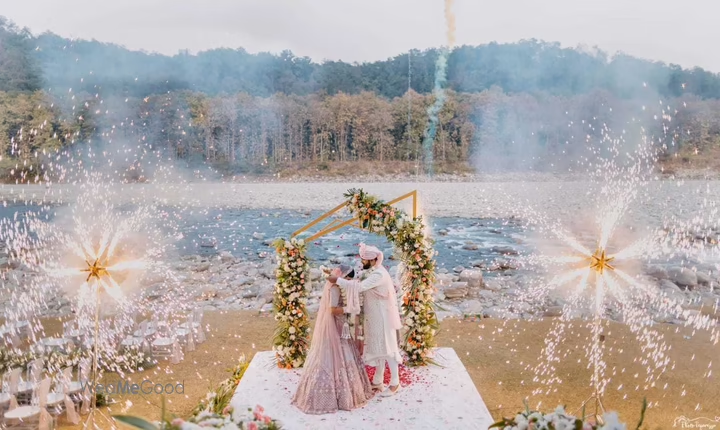Modern couples are reimagining what their weddings look and feel like. Rather than a single event happening in just a few hours, many are embracing multi-day wedding experiences that allow for deeper connection, cultural celebration, curated guest involvement, and unforgettable shared memories. These extended celebrations transform weddings into immersive journeys where guests feel valued, included, and part of something meaningful.
This article explores the evolution of multi-day weddings, how to design them successfully, and the thoughtful details that separate a well-planned experience from a logistical overwhelm.
Why Multi-Day Weddings Are Becoming the New Standard
Traditional weddings often struggle to fit introductions, reunions, rituals, entertainment, and heartfelt moments into a compressed timeline. Couples now value:
-
More quality time with guests
-
Deeper emotional connection between families
-
Cultural and personal storytelling
-
Relaxed pacing and meaningful shared experiences
Many weddings now begin before the ceremony and continue long after the reception. This shift reflects a deeper desire to create memorable shared environments, rather than a singular, perfunctory celebration.
Emotional and Social Benefits
Multi-day gatherings give guests time to bond beyond small talk and rushed greetings. Relationships form more organically when people share:
-
Activity-based interactions
-
Communal meals
-
Relaxed downtime
-
Personal storytelling moments
This ultimately strengthens not just the celebration—but the support system around the couple.
Practical Advantages
Longer wedding itineraries can actually reduce stress. With more time available:
-
Tasks are spread out
-
Guests feel less rushed
-
Couples can enjoy each moment fully
Rather than being swept through the day, couples are present in it.
Structuring a Multi-Day Wedding: Key Phases to Consider
A successful extended wedding celebration typically follows a structured arc. Each day or segment has its own purpose and emotional tone.
Day 1: Welcome and Grounding
This day sets expectations and brings everyone together in a relaxed atmosphere.
Common elements include:
-
Welcome dinner or sunset cocktail event
-
Cultural or family storytelling session
-
Live acoustic music or background entertainment
-
Soft introductions among guest groups
Goal: Create comfort and establish a sense of shared anticipation.
Day 2: Cultural Depth and Participation
This portion of the celebration often highlights meaningful traditions, rituals, or symbolic activities.
Examples include:
-
Henna gatherings
-
Tea ceremonies
-
Blessing rituals
-
Community art or keepsake activities
Guests gain emotional connection because they participate rather than simply watch.
Day 3: Ceremony and Celebration
This is the centerpiece event—but occurs within an already formed communal atmosphere.
Possible structure:
-
Slow morning for mindful preparation
-
Ceremony designed around shared storytelling or personalized vows
-
Thoughtfully curated reception where guest experience is prioritized
Optional Day 4: Farewell and Reflection
Not every wedding includes this, but when possible, it creates closure and gratitude.
This may involve:
-
Brunch by the water
-
Group hike or outdoor activity
-
Family-style breakfast
The tone is calm, warm, and unifying.
Designing Guest-Centered Experiences
The most memorable multi-day weddings are those designed around how guests will feel, move, and connect.
Curate Comfortable Pacing
Overpacking the schedule leads to stress. Instead:
-
Include intentional down time
-
Offer optional activities rather than mandatory ones
-
Provide clear and simple itineraries
Personalize Hospitality Touchpoints
Small details communicate care:
-
Welcome room baskets
-
Handwritten notes
-
Refreshment stations throughout venues
-
Weather-appropriate amenities (shawls, parasols, sunscreen)
Hospitality is not about extravagance—it’s about empathy.
Think About Sensory Atmosphere
The most immersive wedding experiences engage:
-
Sight: Lighting, floral textures, natural landscapes, curated tablescapes
-
Sound: Live performances, quiet spaces vs. celebration zones
-
Taste: Regional menus, cultural food rituals, late-night comfort snacks
-
Scent: Fresh florals, signature candles, natural outdoor fragrances
Sensory consistency creates emotional unity.
Choosing a Venue That Supports an Extended Celebration
Location matters more in multi-day weddings. Look for:
-
On-site lodging to eliminate travel stress
-
Multiple event spaces to create varied atmospheres
-
Natural gathering areas where casual bonding happens spontaneously
-
Weather flexibility (indoor and outdoor options)
Boutique hotels, estates, countryside villas, eco-retreats, beach lodges, and cultural heritage venues are popular because they feel intimate and self-contained.
Incorporating Cultural and Personal Identity Meaningfully
A multi-day structure allows space for deeper heritage and storytelling.
Ways to Honor Cultural Identity
-
Multi-lingual rituals
-
Traditional garments or textiles
-
Regional foods and ceremonial drinks
-
Family storytelling or ancestral blessings
Ways to Integrate Personal Identity
-
Shared hobby experiences (cooking class, stargazing, hiking)
-
Music that reflects the couple’s relationship chapters
-
Readings or guest-led memory sharing
This format ensures that the wedding reflects who the couple truly is.
Managing Logistics Smoothly (Without Overwhelm)
Extended celebrations require thoughtful planning—but not necessarily complication.
Key Organizational Strategies
-
Hire a planner experienced in multi-day events
-
Use one communication channel for all updates
-
Choose vendors who can stay on-site or nearby
-
Create clear transportation and schedule signage
Delegate Decision Ownership
Not every detail needs personal input. Assign:
-
A décor coordinator
-
A ceremony manager
-
A guest hospitality lead
Delegation allows the couple to experience instead of supervise.
Sustainability Considerations for Multi-Day Weddings
Longer celebrations do not need to be wasteful.
-
Opt for re-usable décor elements
-
Choose seasonal, local florals and foods
-
Consolidate transportation to limit carbon footprint
-
Offer reusable welcome gifts instead of disposable favors
Meaningful does not require excessive.
FAQ
1. Do multi-day weddings cost significantly more than single-day weddings?
Not always. Costs depend on guest count, venue choices, and hospitality decisions. Many couples reduce décor or entertainment costs by reusing elements across multiple events.
2. How many guests is ideal for a multi-day wedding experience?
They work beautifully for both intimate and large weddings. Guest count matters less than creating thoughtful environments for interaction.
3. Should guests be required to attend every event?
No. A combination of optional and core events gives guests flexibility and reduces pressure.
4. Can a multi-day structure work without cultural or religious traditions?
Absolutely. The approach is about connection and storytelling, not ritual complexity.
5. What is the biggest planning challenge for multi-day weddings?
Time coordination and guest communication. A clear schedule and centralized information solve most issues.
6. How early should planning begin?
12–18 months is ideal, especially if your venue requires group lodging.
7. What is the most important factor in building a memorable multi-day wedding?
Prioritize hospitality and emotional intention over visual perfection. People remember how they felt more than how the décor looked.










